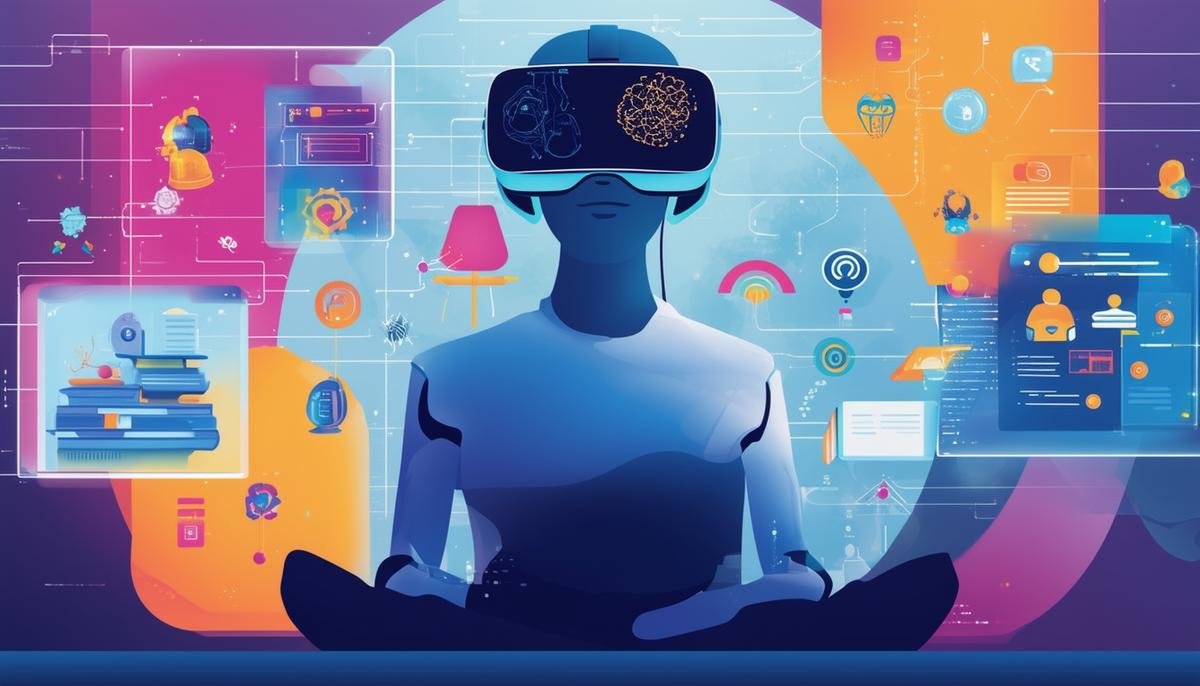AI Integration in Blinkist
Blinkist is harnessing AI to transform how it curates and personalizes content. AI integration, especially generative AI like GPT-4, is changing the game. Blinkist uses AI to scan and summarize large volumes of text quickly. This accelerates the content production process and ensures that summaries capture the main ideas effectively.
AI also hones writing and communication strategies, fine-tuning how key ideas and learnings are presented. Advanced voice generation technologies like Elevenlabs help produce audio content at scale, automating parts of the recording process.
Despite these advancements, Blinkist maintains human oversight. Editors review AI-generated content to correct inaccuracies and add a human touch. This blend of AI efficiency and human creativity maximizes the quality and appeal of the summaries.
AI isn’t just aiding content creation; it’s also enhancing content personalization. Machine learning models recommend content based on user interests and behaviors. Generative AI customizes notifications, and features like Blinkist AI provide hyper-relevant recommendations based on user queries.
Blinkist’s use of AI is set to reshape the future of learning. It increases content production capacity, improves quality, and offers diverse formats to meet varied user preferences.
Content Creation with AI
AI plays a crucial role in refining writing styles. By analyzing a vast array of texts, AI algorithms can determine the most effective ways to communicate ideas. This ensures that the key points and lessons resonate more effectively with diverse audiences.
AI also revolutionizes audio content production. With technologies like Elevenlabs, Blinkist can automate parts of the audio recording process, such as voice generation. The use of AI in audio mastering ensures that the end product maintains high quality, delivering a seamless listening experience.
However, AI does have its limitations. AI-generated content can sometimes produce inaccuracies or lack nuanced understanding. For instance, while AI can mimic human writing styles, it occasionally provides incorrect information. AI-narration cannot yet fully replicate the intonation, cadence, and emotional emphasis that human speech can offer.
This is where human oversight becomes crucial. Editors at Blinkist review AI-generated summaries to ensure accuracy and add a personal touch. They correct errors, infuse creativity, and customize the content to be more engaging and relatable for the users.
Human editors ensure that audio content retains the warmth and relatability of human narration. While AI can assist in voice generation, the subtleties of human speech are essential for effective communication and listener engagement.
AI serves as a powerful tool to amplify human capabilities. It streamlines the content creation process, enhances writing and audio production, and personalizes user experiences. Yet, the role of humans remains indispensable in ensuring the authenticity, accuracy, and emotional depth of the content.
Personalization and User Experience
Blinkist’s use of AI extends beyond content creation to significantly enhancing user experience through content personalization. Machine learning (ML) models are at the core of this personalization, processing user data to craft reading and listening suggestions. By analyzing user behaviors and preferences, AI enables Blinkist to recommend content that aligns closely with individual interests, creating a unique learning journey for each user.
These ML models use sophisticated algorithms to identify patterns in user interactions. They evaluate both short-term activities, such as immediate content engagement, and long-term metrics like user retention and continued app usage. This dual focus ensures that recommendations are instantly relevant and foster sustained interest and engagement over time.
Blinkist incorporates Generative AI for crafting the copy of push notifications, enhancing their relevance. This AI-driven approach ensures that notifications are meaningful and timely, prompting users with content that resonates with their current learning contexts. Furthermore, a chat interface called Blinkist AI leverages user queries to curate hyper-relevant recommendations, making the discovery process more interactive and user-centric.
Blinkist’s approach involves calibrating ML models to:
- Recommend content based on past behaviors
- Introduce novel material to broaden users’ horizons
This constant iteration on the recommendation algorithms ensures that users receive a dynamic mix of familiar favorites and new, intriguing subjects.
AI also plays a critical role in continuously improving the user experience. By collecting and analyzing user feedback, Blinkist tweaks its ML models to enhance recommendation accuracy. The feedback loop allows for rapid adaptation to evolving user needs, ensuring that the platform remains responsive and relevant.
While AI drives personalization, it is the human touch that polishes the experience. User data is continuously reviewed to refine the algorithms, ensuring that the AI doesn’t just cater to trends but adds real value to the learning experience. This blend of AI efficiency and human refinement empowers Blinkist to offer a distinctive and engaging learning journey customized to each individual user.

Future Prospects of AI in Blinkist
As we look ahead, the future of AI integration in Blinkist appears promising, marked by numerous advancements and innovations poised to redefine the learning experience. One exciting prospect is the development of interactive and immersive content. Leveraging technologies such as augmented reality (AR) and virtual reality (VR), Blinkist could create learning experiences that go beyond traditional text and audio. Imagine engaging with a book’s core concepts through interactive VR scenarios or augmented visuals that complement the summarized content, making learning more engaging and effective.
In addition to immersive experiences, AI will drive the evolution of adaptive learning features. Adaptive learning uses AI to adjust the educational content dynamically based on the individual learner’s progress, strengths, and weaknesses. For Blinkist, this could mean personalizing not just what content a user sees but how it is presented. For example, if a user struggles with a particular concept, the AI could provide:
- Additional resources
- Alternative explanations
- Different formats to ensure comprehension
This personalized approach caters to diverse learning styles and supports learner autonomy, empowering users to take charge of their education journey.
Expanding the content library is another key area where AI can make a significant impact. With AI’s ability to process and distill vast amounts of information quickly, Blinkist can extend its offering beyond books to include a wider array of content types such as articles, videos, and interactive elements. This diversification allows Blinkist to cater to varied preferences and learning needs, making the platform a one-stop solution for continuous learning.
AI can facilitate partnerships with experts, authors, and publishers to create exclusive content that enhances the value proposition of Blinkist. By analyzing trends and gaps in current offerings, AI can suggest collaborations that bring high-value, relevant content to users, ensuring that Blinkist remains at the forefront of educational innovation.

In summary, Blinkist’s integration of AI is reshaping the learning landscape by enhancing content creation and personalization. This synergy of technology and human insight sets a new standard for efficient and impactful bite-sized learning.
- Blinkist. The Blinkist Way: Our approach to bite-sized learning. Blinkist. 2021.
- Elevenlabs. AI Voice Technology: Revolutionizing Audio Production. Elevenlabs. 2022.




